Finding good gold seems to be getting harder and harder to do. Especially when you’re not moving 1000 yards per day through a massive trommel or crushing 5000 tons per day for a complex hard rock mill system, which might be averaging 0.035 ounces per ton.
Most of us are considered ‘small miners’ by the big guys. We might be detecting, sluicing, doing some small trommel or mill work, or just plain gold panning. Prospecting is a real joy and finding a new location with some promising color is a continuing effort for some of us. This article is oriented to improve your chances of success.

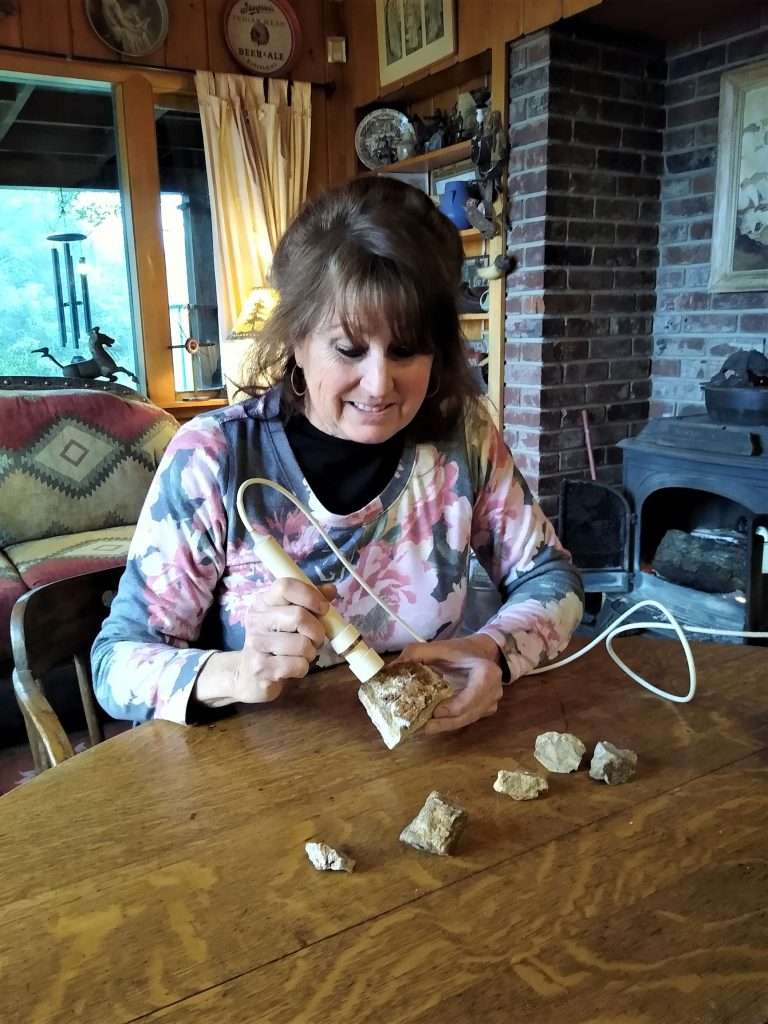
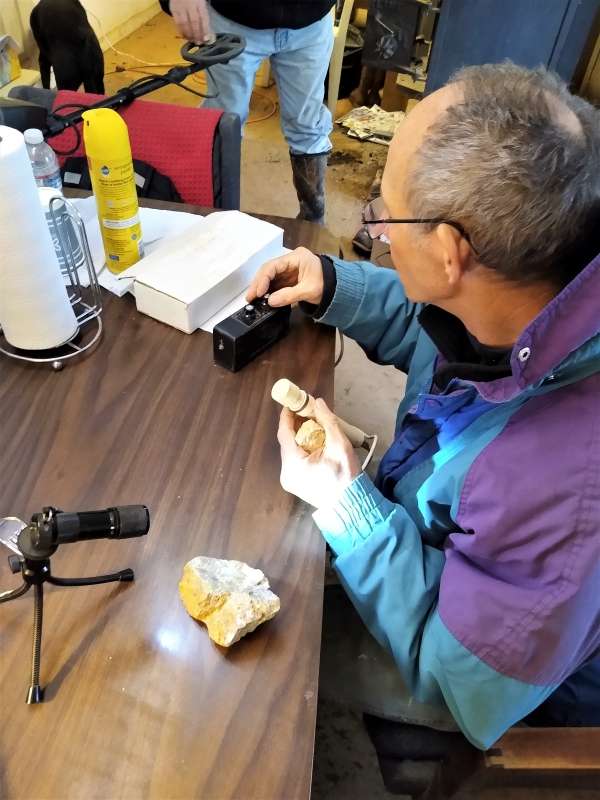
Recently I was given some rock that I later called ore. It was only about six pounds of rock so no more than two good hands full. You couldn’t visibly see gold in it but it was labeled as being from a hard rock gold mine up north. This rock had been in a family for many years and they were cleaning up an old workshop that had lots of minerals and miscellaneous ‘ore’ samples. These six pounds of rock was some of it.
Now what miner wouldn’t take these samples and check them out? After all they could carry gold and why were they kept if they didn’t? I have a lot of rock that doesn’t carry though but I still check, especially under these conditions.
Four of us were at my mining office and out came the detectors to check for gold in the rock. This was going to be a good test of some really good and expensive detectors.
I should forewarn you though that I was ahead of the game some. When I got these samples, I had tried my detector without success and I then took a 10-power magnifying glass and there the gold was in most of the rock. Two of us were actually checking this out. Both of us saw plenty of fine gold but it was not visible just looking at it. My detector is an older one and I’m not a good detectorist anyway. I’ve been lucky to find gold with it but surely a better detector would see the gold in the rock. Mine sure didn’t.
Well, the guys really good detectors didn’t see the gold either – and they were real experts who had already found more gold than their share! Now even a minor hint of color was detected. Was the rock so poor in values that it wasn’t a worthwhile pursuit? With the detectors failing to see the gold in the rock we then went to another tool called pin pointers. I think most of you know what pin pointers are, and likely have one, but in case you don’t I’ll briefly cover them.

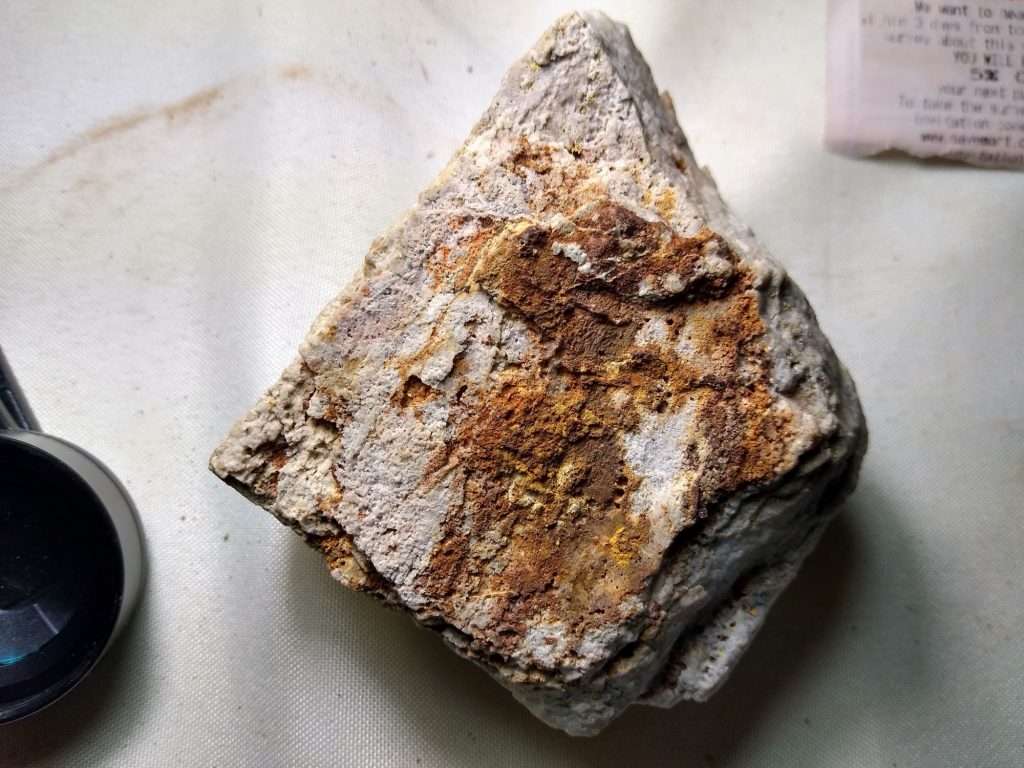

A pin pointer is a very small, hand held, detector of sorts, that is used to find very small targets. It’s almost considered a probe that is very sensitive at its tip. The probe is generally not more than 12 inches long, with a line connected to a small control box. You can look up ‘pin pointers’ on the internet and see the various types available. The average cost varies from around $40 to $280 if you’re seeking the most sensitive ones.
In out testing of these rocks, we had three different pin pointers, one which was the top of the line from a cost viewpoint. Amazingly, two of the pin pointers did not see the gold in the rock. Absolutely nothing. No indication of any gold being present. However – one pin pointer did find the gold on a consistent basis. Keep in mind the guys testing these rocks used their own pin pointers that they use in the field. They are successful with them.
With that said why was one pin pointer successful and others not? I think the answer lies in the quality of the pin pointer. That’s no different than the variance between the larger detectors and their quality and engineering.
Perhaps the rock being tested just didn’t have enough gold to make it worthwhile? One way to prove it was our next step. We took five pounds of the rock and ran the rock through a jaw crusher, then through a pulverizing unit that almost turned the rock to face powder. Rather than trying to run an assay on for its values per ton, we went ahead and panned out the pulverized rock. Panning can be successful if you’re really careful and we took our time. Maybe we lost some of the really fine gold but not enough to affect our evaluation.
We cleaned up the cons and weighed the result. It was visible for sure. We put the collected gold on a scale and the result was 1.44 pennyweight! Yep, lots of gold that generally would have been passed up. If you convert these 5 pounds of rock, and the gold recovered to an assay value, this ore would run 28.8 ounces per ton. Extremely rich!
So, what’s the point of all this? It goes to show that in our prospecting and search for gold that we have to be extremely careful in using our tools and knowing that we could pass up some really good values. What if, in this case, there was 50 pounds of this ore? We most likely would go right on past it. That’s ¾ of an ounce lost. What if this rock was broken out of a vein, in place? We just might have missed an opportunity for a valid hard rock mine and a serious mining venture.
Was this rock just abnormal and extremely unusual? Nope. Many years ago I was detecting and found several really nice piece of gold and quartz. The story was written up in an ICMJ article, issue of May 2010. One of the pieces I kept, which I’m estimating had a good 5 pennyweights of gold in it. Less than a year ago we tested this gold and quartz piece by running it under two of the best detectors made. They did not see this gold. No matter how we turned it the detectors did not recognize the gold. The pin pointers did.
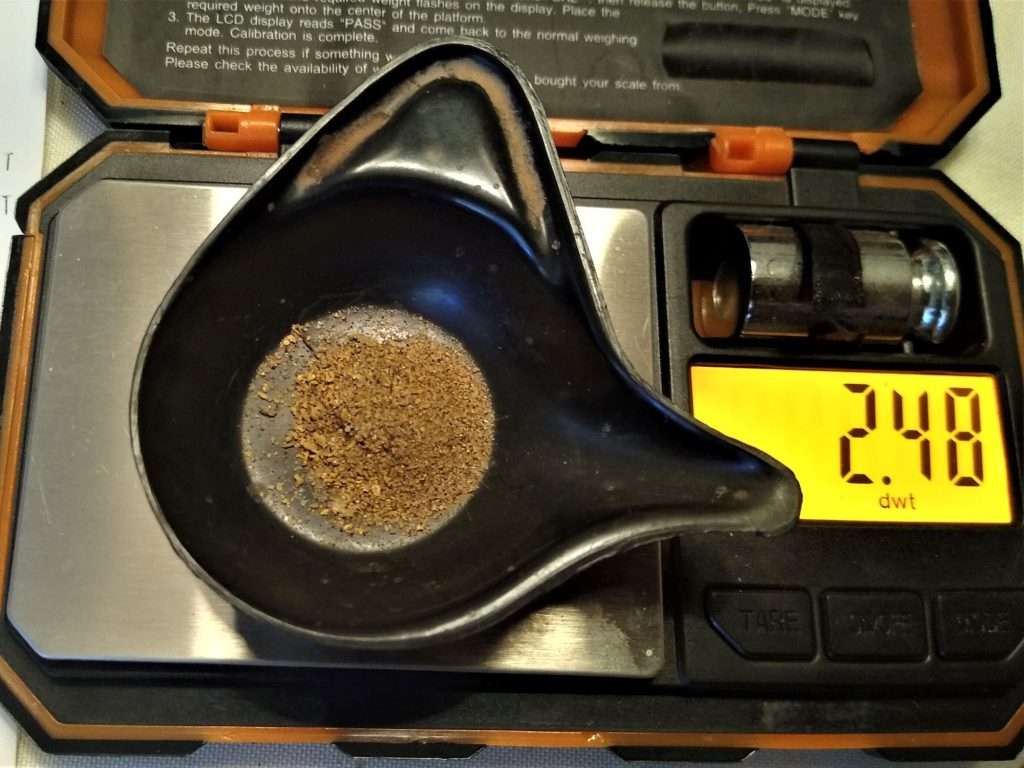
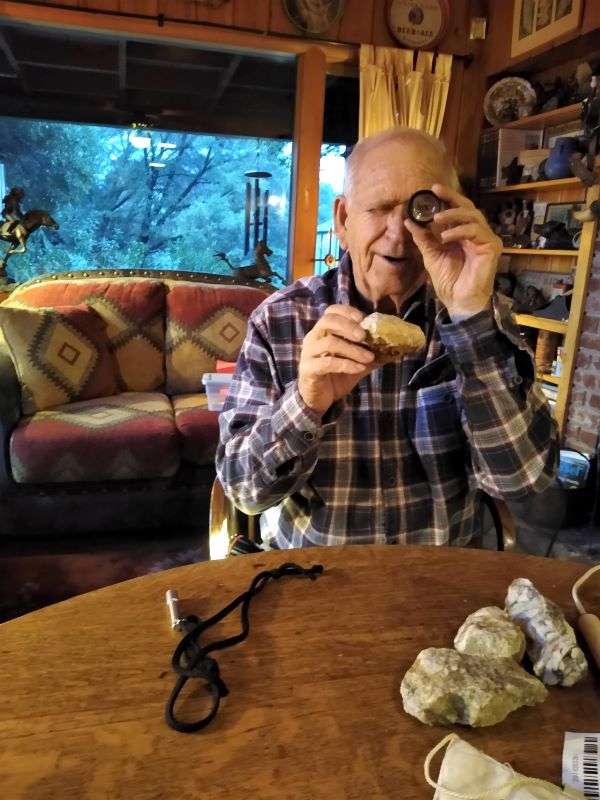
There are other examples of this as well.
(I found the gold piece with a detector that was oriented to fine gold recovery. I was also very lucky that day)
The answer for missing all this is the gold dissemination within the sample. If the gold in the rock is not connected sufficiently enough, and therefore dense enough, most detectors will not see the gold. This is true even if the rock is extremely rich. The pin pointers are much better at this, even though they may miss the gold too, depending on the pin pointer.
There are some detectorists who now use a pin pointer mounted on a rod, extending the pin pointer like a normal detector. There are pros and cons on this but I can certainly see the value.
We can increase our chances of success by recognizing gold dissemination and checking out much more closely rock that appears to be gold bearing. Pin pointers are a valuable tool.
To move away from hard rock for the moment, others have been very successful with pin pointers cleaning out placer bedrock crevices. Getting down into crevices can be hit and miss, but the pin pointers make sure you don’t miss some nice pieces. Bedrock crevices can pinch and swell some too, and there has been lots of nice nuggets found when there seems to be only bedrock present. Keep on digging!
All this points to the right tools for prospecting and finding gold, recognizing that gold is not always visible, even if it’s high grade!
I’ve been in mining full time for 42 years now and the learning process never seems to stop. An old saying by Aristotle “The more you know, the more you know you don’t know”. Until soon.
